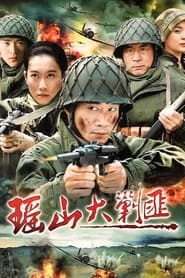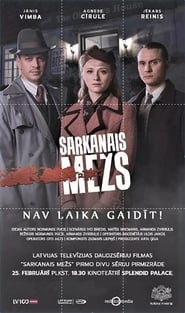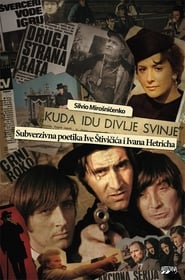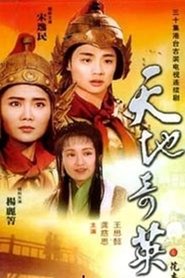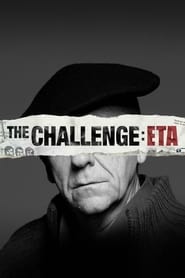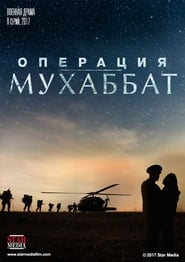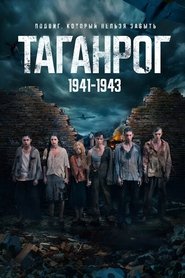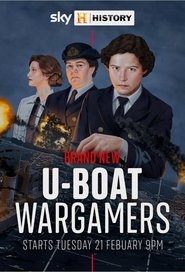War Politics TV Series - Page 79
-
瑶山大剿匪
2011
瑶山大剿匪
2011
-
Shangri-la
2011
Shangri-la
2011
-
国家公诉
2003
国家公诉
2003
-
Raudonmedžio Rojus
1980
-
The White Horse
1993
The White Horse
1993
star 1The White Horse is a Russian TV serial broadcast in 1993. The film, in 10 episodes, was directed by Gelii Ryabov. It presents the Russian civil war in Siberia from 1917–1920 and the struggle of the White Russians under the command of Admiral Alexander Kolchak against the Bolshevik forces, until his final defeat. -
荒原城堡731
1991
荒原城堡731
1991
-
Red Forest
2019
Red Forest
2019
A drama about the national resistance movement in Latvia after the Soviet occupation. Events take place in 1949 when the British intelligence service MI6 tries to find out about the situation in the Baltic States occupied by the Soviet Union. Wittold (Jekabs Reinis), together with other Latvians, works hard in his daily work, and Velta (Agnese Cirule) is a nurse. They dream of going to the United States, saving money, planning a wedding and arranging the necessary documents because the US carefully selects emigrants. But Wittold decides to take part in the Mission, and the hope of changing history changes his life. -
Where the Wild Boars Go
1971
star 8.5It happens around Zagreb in 1941-1943, during World War II. Two groups of smugglers led by Crni Rok and Veriga, fight for supremacy on the black market. They also have to deal with the Germans, Ustashas, the police and communist illegals. -
الحجاج
2003
-
天地奇英花木兰
1996
天地奇英花木兰
1996
-
天阵
2010
天阵
2010
-
Shootout!
2005
Shootout!
2005
star 7Shootout! was a documentary series featured on The History Channel and ran for two seasons from 2005 to 2006. It depicts actual firefights between United States military personnel and other combatants. There are also occasional episodes dedicated to police or S.W.A.T. team firefights, as well as Wild West shootouts. It also now has a feature of downloading and playing a first-person shooter detailing some of the battles. The battles include skirmishes from World War II, the Vietnam War, and the ongoing War on Terror in Afghanistan and during the 2003-2010 Iraq War. Season 1 was produced for The History Channel by Greystone Communications and Season 2 was produced by Flight 33 Productions. The series was created by Dolores Gavin and Louis Tarantino. -
星火云雾街
2018
星火云雾街
2018
-
The Challenge: ETA
2020
The Challenge: ETA
2020
star 6.1The story of how the Guardia Civil, a militarized police force, fought for nearly half a century against ETA, a ruthless terrorist gang dedicated to murder, kidnapping, extortion and arms and drug smuggling while cynically demanding independence for the Basque Country in northern Spain. -
Salas u malom ritu
1976
Salas u malom ritu
1976
star 10Adventures of a small boy with a big heart and lots of courage during the Nazi occupation of Vojvodina. -
Операция «Мухаббат»
2018
-
Taganrog
2025
-
U-Boat Wargamers
2023
U-Boat Wargamers
2023
star 6.8January 1943: Admiral Karl Dönitz, head of the Nazis’ U-boat fleet, has brought Britain to the brink of starvation by ruthlessly destroying close to a thousand of their merchant ships. If the transatlantic shipping route is cut off, the Allies will lose their last foothold in Western Europe. The Royal Navy turns to retired war gamer Gilbert Roberts. Roberts is to use war gaming to try to decipher and combat Dönitz’s tactics. To do this, he needs a team, but the Navy can’t spare any men. Instead, he risks the ridicule of high command by turning to the Women’s Royal Navy Service (WRNS) to war game the U-boats’ tactics. In partnership with Jean Laidlaw, one of Britain’s first female chartered accountants, and a small team of resourceful female mathematicians, Roberts acts out naval battles and games the U-boats’ moves on a linoleum floor, using chalk and wooden model ships.
